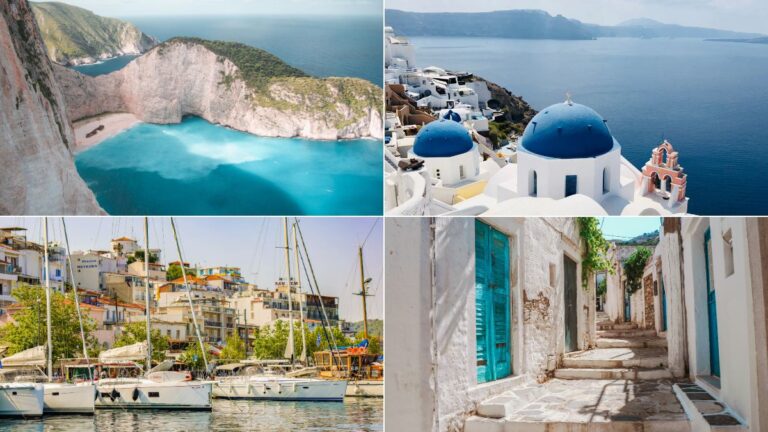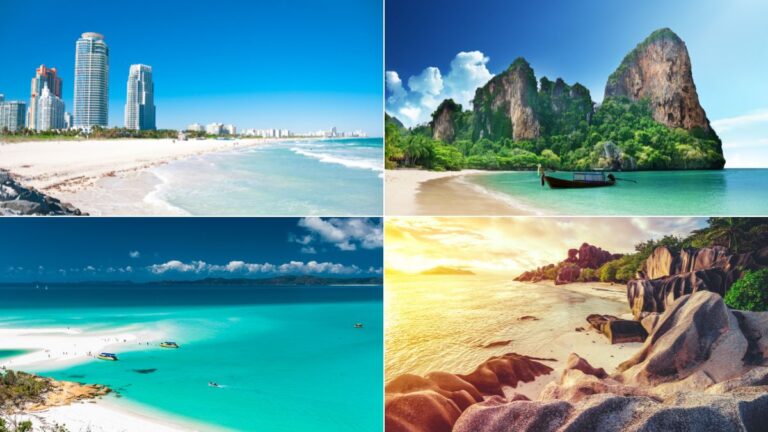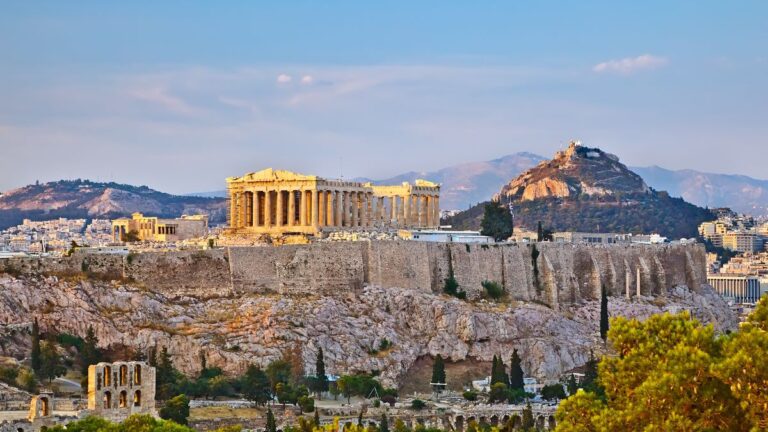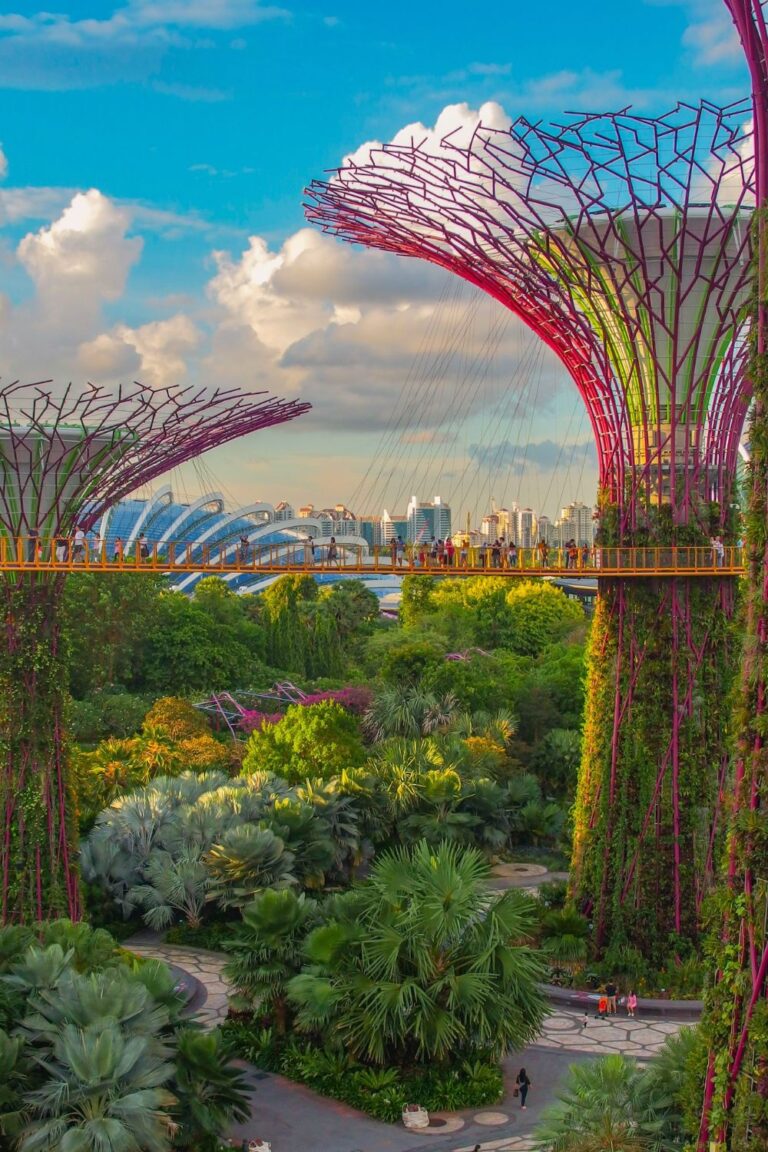50 Facts About Vietnam You Need to Know Before Traveling There
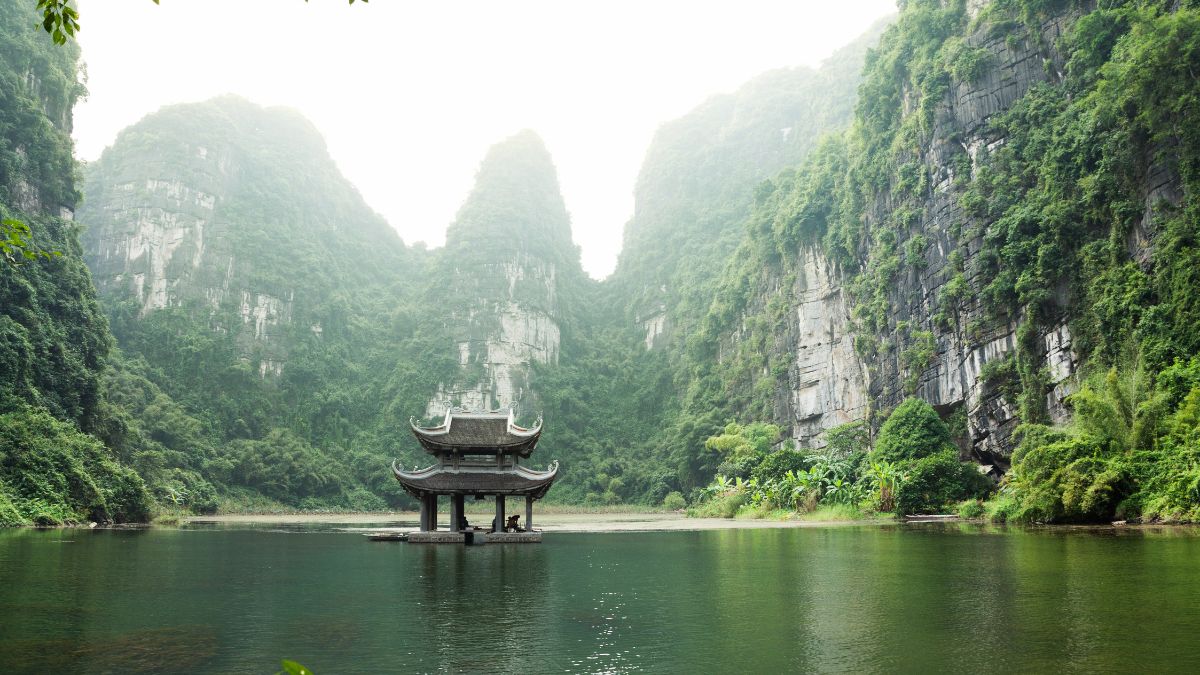
As participants in Amazon Associates and other programs, we earn from qualifying purchases. This comes at no additional cost to you. For more details, see our Affiliate Disclosure.
Nestled in the heart of Southeast Asia, Vietnam is a land of staggering natural beauty, profound historical depth, and vibrant culture that promises an unforgettable experience for every traveler. From the mist-shrouded peaks of the north to the lush waterways of the Mekong Delta in the south, Vietnam’s landscapes are as diverse as they are majestic. But beyond its scenic vistas, Vietnam is a treasure trove of fascinating facts that reveal the soul of this enchanting country. Whether you’re a history buff, a culinary enthusiast, or an adventure seeker, knowing these 50 essential facts about Vietnam will enrich your journey, offering insights into its enduring spirit, resilient people, and the myriad experiences that await. Prepare to be captivated by the stories and secrets of Vietnam, a country where tradition and modernity weave together to create a tapestry as vibrant as the markets of Hanoi and as serene as the waters of Ha Long Bay.
1. A Land of Diverse Climates
Vietnam is a country of climatic paradoxes, where the weather can vary dramatically from north to south, creating a diverse tapestry of ecosystems. The north experiences cool winters and hot summers, while the south enjoys a tropical climate year-round. This diversity allows for a rich variety of crops, wildlife, and scenery, from the foggy hills of Sapa to the sunny beaches of Phu Quoc. Understanding Vietnam’s varied climate is essential for travelers wishing to explore the country’s natural beauty in its fullest bloom.
2. The Ancient Capital of Hanoi
Hanoi, the capital of Vietnam, is a city where the past and the present coexist. With over a thousand years of history, it’s a place where travelers can walk through time, from the ancient Temple of Literature to the bustling streets of the Old Quarter. Hanoi’s French colonial architecture, peaceful lakes, and vibrant street markets offer a glimpse into the country’s rich cultural tapestry, making it a must-visit destination for those seeking to understand Vietnam’s complex identity.
3. The UNESCO Heritage of Ha Long Bay
Ha Long Bay, a UNESCO World Heritage Site, is an ethereal landscape of limestone karsts rising from emerald waters. This natural wonder is home to over 1,600 islands and islets, many untouched by human hands. Cruising through the bay, visitors encounter floating villages, secluded beaches, and ancient caves, each telling a story of natural majesty and geological evolution. Ha Long Bay is not just a sight to behold; it’s an experience, offering peaceful moments and adventurous activities alike.
4. The Historic Depth of Hue
Hue is a city that whispers the stories of Vietnam’s imperial past. Once the capital of the Nguyen Dynasty, it houses the majestic Imperial City, a vast complex of palaces, temples, and walls that speak of bygone royal splendor. The Perfume River adds a serene backdrop to the city’s historic sites, including the tombs of emperors and the iconic Thien Mu Pagoda. Hue offers a profound glimpse into Vietnam’s royal history, its struggles, and its cultural heritage.
5. The Vibrant Life in Ho Chi Minh City
Ho Chi Minh City, formerly known as Saigon, pulses with energy and ambition. This sprawling metropolis is a hub of culture, commerce, and cuisine, where traditional markets sit alongside modern skyscrapers. The city’s war history is preserved in museums, while its streets buzz with the sounds of motorbikes and the aromas of street food. Ho Chi Minh City embodies the dynamic spirit of Vietnam, showcasing its rapid development while honoring its past.
6. The Legendary Cu Chi Tunnels
The Cu Chi Tunnels are a testament to Vietnamese ingenuity and resilience during the Vietnam War. This vast underground network, stretching over 250 kilometers, provided shelter, supply routes, and a strategic advantage to the Viet Cong. Today, visitors can explore a portion of the tunnels, gaining insight into the harsh realities of war and the resourcefulness of the Vietnamese people in their fight for independence.
7. The Unique Water Puppets Show
The traditional art of water puppetry, or “Mua Roi Nuoc,” is a unique cultural highlight that originated in the rice paddies of northern Vietnam. This enchanting performance, where wooden puppets seem to dance on water, tells tales of ancient myths, rural life, and historical events. Accompanied by a Vietnamese orchestra, the water puppet show is a magical experience, reflecting the creativity and folklore of Vietnamese culture.
8. The Culinary Delights of Vietnamese Cuisine
Vietnamese cuisine is a flavorful journey through the country’s regional diversity. From the fragrant pho of the north to the spicy banh xeo of the south, each dish tells a story of local ingredients, traditional techniques, and cultural influences. Street food plays a central role, offering delicious and authentic tastes at every corner. Exploring Vietnam’s culinary landscape is an adventure for the palate, revealing the essence of the country’s rich culinary traditions.
9. The World’s Largest Cave in Phong Nha
Phong Nha-Ke Bang National Park is home to Son Doong Cave, the largest cave in the world. Discovered in 2009, this colossal natural wonder boasts its own river, jungle, and climate system. Adventure seekers can embark on expeditions to explore its massive chambers and otherworldly formations. The park itself is a UNESCO World Heritage Site, recognized for its geological diversity and the breathtaking beauty of its karst landscape.
10. The Tradition of Ao Dai
The Ao Dai is Vietnam’s national garment, symbolizing beauty, elegance, and pride. This long, flowing tunic is worn by both men and women on formal occasions, weddings, and holidays. Its design has evolved over the centuries, reflecting changes in society and fashion, yet it remains a powerful symbol of Vietnamese identity. The Ao Dai is not just a piece of clothing; it’s a cultural icon, representing the grace and refinement of the Vietnamese people.
11. The French Colonial Influence
Vietnam’s architecture, cuisine, and culture still bear the unmistakable influence of over six decades of French colonial rule. From the grand boulevards and colonial edifices of Hanoi and Ho Chi Minh City to the baguettes and coffee culture that permeate daily life, this period left a lasting imprint. While the colonial era is a complex and sensitive chapter in Vietnam’s history, its legacy contributes to the unique cultural tapestry that attracts visitors from around the world.
12. The Festive Spirit of Tet
Tet, the Vietnamese New Year, is the most important and vibrant festival in Vietnam, celebrating the arrival of spring based on the lunar calendar. It’s a time of renewal, family reunions, and community. Streets and homes are festooned with red and gold decorations, symbolizing luck and prosperity. Traditional foods, lion dances, and the giving of lucky money envelopes are integral to the celebrations, making Tet an unforgettable experience for visitors.
13. The Scenic Beauty of Sapa
Sapa, set in the Hoang Lien Son mountain range, is known for its breathtaking landscapes, terraced rice fields, and rich cultural diversity. This picturesque town is a haven for trekkers, offering routes through valleys and mountains inhabited by diverse ethnic minority groups, each with their own unique traditions and colorful attire. The beauty of Sapa lies not just in its natural wonders but in its cultural richness, providing a glimpse into the lives of Vietnam’s ethnic communities.
14. The Floating Markets of the Mekong Delta
The Mekong Delta, known as the “Rice Bowl” of Vietnam, is famed for its vast network of rivers and canals, which host bustling floating markets. These markets are a way of life and a vital part of the Delta’s economy, where locals trade goods and produce from boats brimming with fruits, vegetables, and flowers. A visit to these floating markets offers insight into the daily life of the river communities and the agricultural abundance of the region.
15. The Imperial City of Hue
The Imperial City of Hue, a UNESCO World Heritage Site, stands as a monumental testament to the wealth and power of the Nguyen emperors who ruled Vietnam from the 19th to the mid-20th centuries. This vast complex of palaces, temples, and fortifications is surrounded by moats and intricate stone walls. Exploring the Imperial City offers a deep dive into Vietnam’s royal history, architectural grandeur, and the cultural nuances of a bygone era.
16. The Traditional Craft Villages
Vietnam is home to numerous traditional craft villages, each specializing in a different trade such as pottery, silk weaving, and lacquerware. These villages preserve ancient crafts passed down through generations, offering a window into Vietnam’s artisanal heritage and the meticulous skill of its craftsmen. A visit to these villages is not just an opportunity to see artisans at work but also to support sustainable tourism and cultural preservation.
17. The Importance of Rice in Vietnamese Culture
Rice is not just a staple food in Vietnam; it’s a symbol of life and prosperity. The cultivation of rice, particularly in the terraced fields of the northern highlands, reflects the agricultural ingenuity and hard work of the Vietnamese people. Festivals, rituals, and daily life revolve around the rice planting and harvest cycles, emphasizing its significance in Vietnamese culture, economy, and cuisine.
18. The Heritage of My Son Sanctuary
My Son Sanctuary, a UNESCO World Heritage Site near Hoi An, is an ancient temple complex built between the 4th and 14th centuries by the Champa kings. Nestled in a lush valley, these Hindu temples are dedicated to the worship of the god Shiva. Despite wartime damage, My Son offers a fascinating insight into the spiritual and architectural legacy of the Cham civilization, which once thrived in central and southern Vietnam.
19. The Motorbike Culture
Motorbikes are the lifeblood of Vietnam’s transportation, symbolizing freedom and mobility in the bustling cities and countryside. With over 45 million motorbikes, the streets are a whirlwind of honking, weaving, and darting vehicles. For many visitors, a motorbike tour offers the exhilarating opportunity to explore Vietnam’s landscapes and daily life from a local’s perspective, from the chaotic city streets to the serene rural pathways.
20. The Stunning Beaches of Da Nang
Da Nang, situated on the central coast of Vietnam, boasts some of the country’s most beautiful beaches, including My Khe and Non Nuoc. These stretches of white sand and clear blue waters are perfect for relaxation, water sports, and enjoying the tropical climate. Da Nang’s coastline, framed by the Marble Mountains and the Son Tra Peninsula, offers not only beachside bliss but also a gateway to cultural and natural attractions in the region.
21. The Hill Tribes of the North
Northern Vietnam is home to a mosaic of ethnic minorities, collectively known as the hill tribes. These communities, including the Hmong, Dao, and Tay, live in the mountainous regions, maintaining distinct traditions, languages, and colorful attire. Their villages offer insights into a way of life that has remained unchanged for centuries, with traditional agriculture, handcrafts, and festivals that reflect their deep connection to the land and their ancestors.
22. The Influence of Buddhism
Buddhism plays a central role in Vietnamese culture and spiritual life, influencing everything from art and architecture to daily practices and festivals. Pagodas and temples dot the landscape, serving as places of worship and community gathering. The teachings of Buddhism also permeate Vietnamese philosophy, promoting values of compassion, mindfulness, and harmony with nature, which visitors can observe in the serene temple grounds and through interactions with local monks.
23. The Legacy of the Vietnam War
The Vietnam War, a pivotal and painful chapter in the country’s history, left deep marks on the landscape and the psyche of the Vietnamese people. Memorials, museums, and sites like the Cu Chi Tunnels and the War Remnants Museum offer poignant reminders of the conflict and its aftermath. These places serve not only as educational resources for visitors but also as a testament to the resilience and reconciliation efforts of Vietnam in the decades since.
24. The Biodiversity of Cat Tien National Park
Cat Tien National Park, spanning the southern provinces of Vietnam, is a sanctuary for wildlife and biodiversity. This protected area harbors an array of ecosystems, from tropical rainforests to wetlands, which are home to numerous endangered species such as the Siamese crocodile, the Asian elephant, and the Javan rhinoceros. Exploring the park’s trails and rivers offers a unique opportunity to witness Vietnam’s commitment to conservation and the natural beauty of its untouched landscapes.
25. The Coffee Culture
Vietnamese coffee, with its strong flavor and distinctive preparation methods, is a key part of the country’s culture and social life. From the traditional drip filter (phin) to innovative creations like egg coffee, Vietnam offers a diverse coffee experience. Cafés and street vendors are social hubs where people gather to chat, work, and enjoy the slow drip of the brew, reflecting the importance of coffee in daily life and Vietnam’s status as one of the world’s top coffee exporters.
26. The Art of Silk Weaving
Silk weaving is an ancient craft in Vietnam, with villages like Van Phuc near Hanoi known for their exquisite silk products. This traditional art form involves raising silkworms, harvesting silk, and weaving intricate patterns by hand. The result is high-quality silk goods, including the ao dai, scarves, and home decorations. Visiting these silk villages offers a glimpse into the skillful process and the opportunity to purchase authentic, handcrafted silk items.
27. The Majestic Trang An Landscape Complex
The Trang An Landscape Complex, a UNESCO World Heritage Site in Ninh Binh Province, is celebrated for its spectacular limestone karst peaks, underground river systems, and historic sites. Taking a boat tour through its caves and waterways reveals a landscape often described as “Halong Bay on land,” dotted with temples and surrounded by lush vegetation. Trang An is not only a natural wonder but also a cultural treasure, encapsulating Vietnam’s scenic beauty and historical depth.
28. The Lantern Festival of Hoi An
The Lantern Festival in Hoi An transforms the ancient town into a magical display of lights and colors every full moon. Paper lanterns of all shapes and sizes light up the streets, the river fills with floating candles, and cultural performances enliven the night. This festival is a celebration of heritage and community, inviting visitors to partake in the rituals and experience the enchanting atmosphere of one of Vietnam’s most picturesque towns.
29. The Vibrant Night Markets
Vietnam’s night markets are a feast for the senses, bustling with energy, colors, and flavors. From Hanoi’s Weekend Night Market to Ho Chi Minh City’s Ben Thanh Market at night, these markets offer everything from street food and fashion to crafts and souvenirs. They are social and cultural hubs where locals and tourists alike can savor the best of Vietnamese street cuisine, shop for local handicrafts, and soak in the lively atmosphere.
30. The Cham Civilization
The Cham people, an ethnic minority in Vietnam, are the descendants of the ancient Champa kingdom, which once ruled over central and southern Vietnam. The remaining ruins of My Son Sanctuary and the Cham towers scattered across the region testify to a rich history of art, architecture, and Hindu influence. The Cham culture, with its distinct traditions, religion, and annual festivals, adds to the cultural diversity and historical richness of Vietnam.
31. The Unique Climate of Dalat
Dalat, nestled in the hills of the Central Highlands, offers a cool retreat from Vietnam’s tropical climate. Its temperate weather, mist-covered valleys, and lush landscapes have earned it the nickname “City of Eternal Spring.” This unique climate supports a variety of flowers, vegetables, and fruits not found elsewhere in the country, making Dalat a hub for agriculture and horticulture. The city’s French colonial architecture, serene lakes, and vibrant flower gardens also make it a popular destination for both tourists and locals seeking respite from the heat.
32. The Revolutionary History in Dien Bien Phu
Dien Bien Phu is a city steeped in history, known primarily for the pivotal battle that took place there in 1954. This battle marked the end of French colonial rule in Indochina, with Vietnamese forces emerging victorious after a grueling siege. Today, the Dien Bien Phu battlefield is a place of pilgrimage for those wishing to understand Vietnam’s struggle for independence. Museums, monuments, and preserved sites offer insights into the tactics, hardships, and spirit of the Vietnamese people during this critical period.
33. The Spectacular Hai Van Pass
The Hai Van Pass, winding through the mountains north of Da Nang, offers some of the most breathtaking coastal views in Vietnam. This narrow road, known as the “Ocean Cloud Pass,” presents a thrilling ride for motorists and cyclists, with sharp turns and sudden vistas of the South China Sea. The pass not only showcases the natural beauty of Vietnam’s coastline but also serves as a historical boundary between ancient kingdoms and a strategic military post during various conflicts.
34. The Importance of the Dragon Symbol
The dragon is a powerful symbol in Vietnamese culture, representing strength, prosperity, and the emperor’s divine right to rule. Legends of dragons founding the Vietnamese nation have imbued this mythical creature with a sense of national identity and pride. The dragon motif is prevalent in art, architecture, and festivals, symbolizing the Vietnamese people’s resilience and their connection to the land. This enduring symbol reflects the deep roots of Vietnamese mythology and its influence on the cultural psyche.
35. The Traditional Music of Ca Tru
Ca Tru is a form of traditional Vietnamese chamber music that dates back to the 15th century. Characterized by its unique vocal techniques and the use of specific traditional instruments, Ca Tru is an artistic expression of the Vietnamese spirit. This music genre, which was once in danger of fading into obscurity, has experienced a revival thanks to efforts to preserve and promote Vietnam’s intangible cultural heritage. Attending a Ca Tru performance is a journey into the heart of Vietnam’s rich musical traditions.
36. The Wildlife Conservation Efforts
Vietnam is home to diverse ecosystems, supporting a wide range of flora and fauna, including several endangered species. In recent years, the country has made significant strides in wildlife conservation, establishing national parks and protected areas like Cat Tien National Park and collaborating with international organizations to combat poaching and habitat destruction. These efforts aim to preserve Vietnam’s natural heritage for future generations, highlighting the country’s commitment to environmental sustainability and biodiversity.
37. The Ceramics of Bat Trang
Bat Trang, a traditional ceramics village near Hanoi, has been producing pottery for hundreds of years. Known for its high-quality ceramic goods, ranging from intricate vases to daily dinnerware, Bat Trang is a testament to Vietnam’s rich artisanal history. Visitors to the village can try their hand at pottery-making, learning from skilled artisans who have passed down their techniques through generations. The village’s enduring popularity underscores the importance of craftsmanship and tradition in Vietnamese culture.
38. The Role of the Mekong River
The Mekong River is the lifeblood of the southern Delta region, supporting millions of people through its extensive waterways and fertile floodplains. As one of the most biodiverse areas in the world, the Mekong Delta is crucial for Vietnam’s agriculture, particularly rice production. The river also holds cultural significance, shaping the daily life, cuisine, and economy of the Delta’s communities. The floating markets, fishing villages, and lush landscapes along the river reflect the enduring relationship between the Vietnamese people and their natural environment.
39. The Pho Noodle Soup Tradition
Pho, a traditional Vietnamese noodle soup, is a staple of Vietnam’s culinary landscape. This comforting dish, typically made with beef or chicken broth, rice noodles, and herbs, is beloved across the country and has gained international acclaim. Pho’s origins in the early 20th century reflect the blending of local and foreign influences, creating a simple yet profound representation of Vietnamese cuisine. Enjoying a bowl of pho is not just a culinary experience but a cultural one, embodying the essence of Vietnamese hospitality and tradition.
40. The Sand Dunes of Mui Ne
Mui Ne, located along Vietnam’s southeastern coast, is famous for its striking sand dunes. The White and Red Dunes offer visitors a landscape that seems more akin to the Sahara than Southeast Asia. This natural phenomenon, coupled with the region’s unique coastal ecosystem, makes Mui Ne a popular destination for tourists seeking adventure and natural beauty. From sandboarding and quad biking to simply enjoying the sunrise or sunset, the dunes provide a unique and memorable experience in Vietnam’s diverse natural landscape.
41. The Karst Landscapes of Ninh Binh
Ninh Binh, often referred to as “Ha Long Bay on land,” is distinguished by its stunning karst landscape, with limestone cliffs and mountains rising dramatically from the rice paddies and rivers below. This area is rich in natural beauty and history, featuring ancient temples, hidden caves, and tranquil waterways best explored by rowboat. Ninh Binh’s scenic beauty and serene atmosphere make it a captivating destination for those looking to immerse themselves in Vietnam’s extraordinary landscapes and cultural heritage.
42. The Fishing Culture
Fishing is not just an occupation in Vietnam; it’s a way of life, especially in the coastal regions and the Mekong Delta. Traditional fishing techniques are still in use, and the daily catch is a vital component of Vietnamese cuisine. The floating villages, basket boats, and fish markets are integral to the local culture, offering visitors a glimpse into the maritime traditions that have sustained Vietnamese communities for centuries.
43. The Influence of Chinese Dynasties
Vietnam’s history is deeply influenced by centuries of Chinese rule and interaction, visible in its written language, Confucian social structures, and aspects of its cuisine and architecture. This influence is a testament to Vietnam’s resilience and ability to adapt foreign elements into its unique cultural identity. The impact of Chinese dynasties has been profound, contributing to the rich tapestry of Vietnam’s history and its development as a nation.
44. The Sacredness of Pagodas and Temples
Pagodas and temples hold a special place in the Vietnamese spiritual landscape, serving as centers of Buddhist worship and community life. These sacred spaces are not only places for prayer and meditation but also repositories of art, history, and architecture. They reflect the spiritual beliefs and artistic achievements of the Vietnamese people, offering serene and contemplative environments for both the faithful and visitors alike.
45. The Adventure Sports in Halong Bay
Halong Bay, renowned for its stunning seascapes and limestone pillars, is also a playground for adventure sports enthusiasts. From rock climbing and kayaking to scuba diving and overnight boat trips, the bay offers a range of activities that allow visitors to engage with its natural beauty in active and exciting ways. These adventure sports provide unique perspectives on the bay’s iconic landscapes, making for unforgettable experiences in one of Vietnam’s most celebrated destinations.
46. The Colonial Architecture of Hanoi
Hanoi’s colonial architecture is a visible reminder of the French presence in Vietnam, blending European and Asian styles. The grandiose opera house, the stately government buildings, and the quaint villas of the French Quarter tell the story of a bygone era. These structures add a distinct charm to the city’s landscape, inviting exploration and photography, and serve as a backdrop for Vietnam’s contemporary vitality and growth.
47. The Love for Street Food
Street food is the heart and soul of Vietnamese cuisine, offering a diverse array of dishes that capture the essence of the country’s culinary tradition. From bustling markets to quiet street corners, vendors serve up flavorsome, affordable meals that are an integral part of daily life. Sampling street food, such as banh mi, bun cha, and various noodle dishes, provides a taste of Vietnam’s rich, vibrant culture and the creativity of its people.
48. The Traditional Tet Holiday Foods
Tet, the Vietnamese Lunar New Year, is celebrated with specific traditional foods that carry symbolic meanings for luck, prosperity, and health. Banh chung (sticky rice cake), pickled onions, and boiled chicken are among the dishes that adorn Vietnamese tables during this festive time. These foods are prepared with care and shared among family and friends, reinforcing bonds and cultural identity during Vietnam’s most important holiday.
49. The Conservation of Endangered Species
Vietnam is at the forefront of efforts to conserve endangered species and their habitats, addressing challenges such as habitat loss, poaching, and illegal wildlife trade. Conservation initiatives, both local and international, aim to protect iconic species like the Saola, Indochinese tiger, and Asian elephant. These efforts are crucial for maintaining biodiversity and ensuring the survival of Vietnam’s unique wildlife for future generations.
50. The Resilience and Hospitality of the Vietnamese People
The resilience and hospitality of the Vietnamese people are the foundation of the nation’s spirit. Despite a history marked by conflict and hardship, the warmth and welcoming nature of the locals shine through. Visitors often remark on the generosity and friendliness encountered throughout the country, from urban centers to rural villages. This enduring strength and openness are key to understanding the true essence of Vietnam and its culture.

